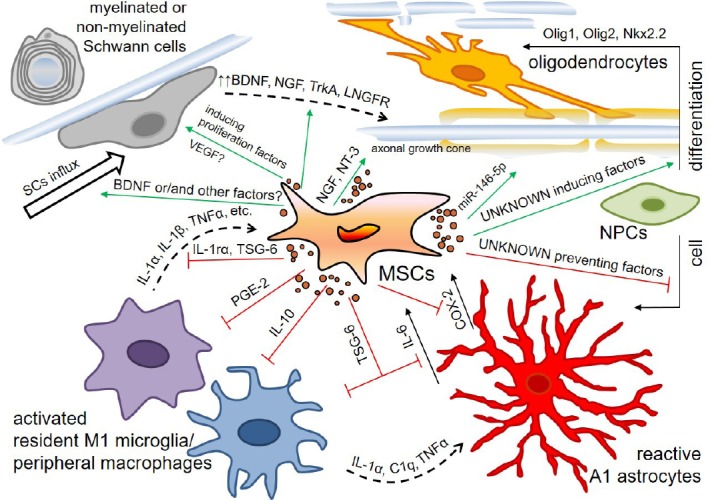Figure 1.

Schematic diagram for some effects of mesenchymal stem cells (MSCs) on the neuronal microenvironment in the area of spinal cord injury (SCI).
Activated resident microglia and peripheral macrophages attracted in the area of SCI produce proinflammatory cytokines such as interleukin (IL)-1α, IL-1β, tumor necrosis factor (TNF)-α, C1q and so on and activate A1 astrocytes and MSCs. In response to these stimuli and probably other signals the MSCs start to secret anti-inflammatory factors such as IL-1ra, TNF-stimulated gene-6 (TSG-6), prostaglandin E2 (PGE2), and IL-10 and modulate a phenotype of microglia/macrophages toward the anti-inflammatory M2 one and reduce the reactivity of astrocytes. The MSCs induce neural progenitor cells differentiation into oligodendrocytes and prevent differentiation into astrocytes. They facilitate myelination and axon growth by producing miR-146-5p and neurotrophic factors, lead not only to influx of Schwann cells in the area of SCI, but promote an increased expression of brain-derived neurotrophic factor (BDNF), nerve growth factor (NGF) and its high- and low-affinity receptors (TrkA and LNGFR) in these cells. COX-2: Cyclooxygenase-2; NT-3: neurotrophin-3.
